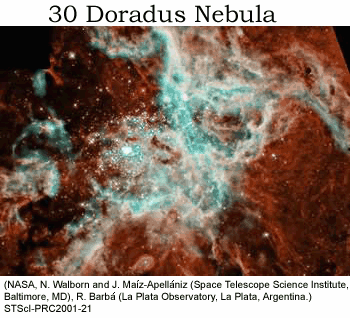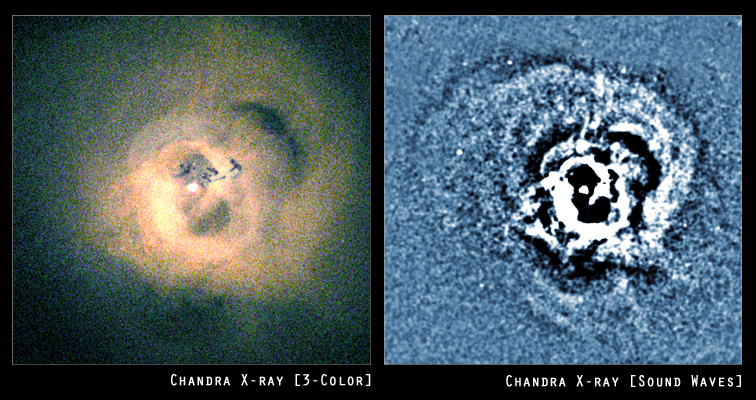Regarding the filamentary tentacles of "hot gas" - which NASA explains is a common term for ionized gas, which is matter in the plasma state, whether weakly or wholly ionized. We are looking at a fairly energetic plasma-filled cosmic space. The world's largest professional organization is the Institute of Electrical and Electronics Engineers (IEEE). Their section on Nuclear and Plasma Physics states that 99% or more of the observable universe is in a plasma state. Cool, condensed matter planets with atmospheres like where we live are an exception; stars, molecular clouds, stellar 'winds', stellar and galactic 'jets', and galactic and interstellar galactic filaments are the norm for plasma conditions. Plasma conditions and large birkeland electric currents exist all around Earth from the ionosphere to the magnetosphere, including the Van Allen belts, and the Earth's polar auroras.
In
Cosmic Plasma, [D. Reidel Publishing Co. of the Kluwer Group, Dordrecht, The Netherlands, 1981; ISBN 90-277-1151-8, page 22] Hannes Alfvén (Nobel Laureate, 1970, in Physics for his development of magnetoelectrohydrodynamics (MHD), wrote:
...in cosmic plasmas the perhaps most important constriction mechanism is the electromagnetic attraction between parallel currents. A manifestation of this effect is the pinch effect, which was studied by Bennett long ago (1934), and has received much attention in connection with thermonuclear research... phenomena of this general type also exist on a cosmic scale, and lead to a bunching of currents and magnetic fields to filaments or 'magnetic ropes'. This bunching is usually accompanied by an accumulation of matter, and it may explain the observational fact that cosmic matter exhibits an abundance of filamentary structures (II.41)... the pinch effect has been very thoroughly studied in the laboratory. Indeed, the magnetic mirror technique used for thermonuclear plasma confinement is based on the pinch effect. In cosmic physics, however, it is very often forgotten. For example, the formation and evolution of interstellar clouds is normally treated by neglecting this effect, in spite of the fact that it must necessarily be of decisive importance (IV.8 and V.4). This has led to the regrettable result that this field and quite a few other fields of astrophysics have run into dead ends.
As we see repeatedly in APODs, filamentary structures are constantly being imaged: on and above the Sun, in the aurorae on Earth, Jupiter, Saturn and Neptune, in the ionosphere of Venus, in the Veil Nebula, in the collimated 'jets' from active galaxies which decelerate into twisted, filamentary plumes light years long (NRAO VLA images; DRAGN images from Jodrell Bank, and in the H1 images of filamentary gas and dust lanes ("dusty plasma") between and among galaxies and galaxy clusters. Filamentary structures are not and can not be formed under gravity-only forces; they are a natural and particularly common outgrowth of electromagnetic forces operating in cosmic plasmas. Hubble's legacy, Spitzer's infrared observations, SOHO, Hinode, SDO, TRACE, The Swedish Institute for Solar Physics and many others in helioastronomy, Chandra's X-ray visions, and the NRAO VLA and other radio astronomy observatories' radio images present gorgeous but silent testimony to this fact.
A static magnetic field can be generated by either a
constant current (an
electric current; i.e., a flow of moving charged particles, in this case whose flux density does not vary with time) or a permanent magnet [such as a bar magnet]...
Time variable magnetic fields are created by electric fields, E, generated by time varying current flow I. (Reference: Schaum's Outline Series,
Electromagnetics, Second Edition, McGraw-Hill, 1993, ISBN 0-07-021234-1; Chapter 9,
Ampere's Law and the Magnetic Field, 9.1 and Chapter 13, Maxwell's Equations and Boundary Equations, 13.5, Maxwell's Equations.)
Magnetic fields in galaxies and the Sun can be detected by a number of methods, including optical polarization; Zeeman splitting of radio lines (caused when emitting or radiating atoms enter a magnetic field - observed by examining emission lines on a spectrograph); Faraday rotation of polarized radio emission, and strength of synchrotron emission. (Reference:
Physics of the Plasma Universe, Anthony Peratt, Springer-Verlag, 1992, ISBN 0-387-97575-6; Chapter 3. Biot-Savart Law in Cosmic Plasma, pp.119-122). Solar astronomers and radio astronomers
routinely use one method or another to observe the magnetic fields on our star and in our and other nearby galaxies. They are familiar with the invariable linkage between observed magnetic fields and the electrical currents which invariably cause them. (There are not a lot of little bar magnets floating around in space creating only static magnetic fields.) See also publications by radio astronomer Bryan Gaensler, University of Sydney, at
http://www.physics.usyd.edu.au/~bmg/
So there is the picture when you
combine gravity (G) forces with the well-known force of electromagnetism (EM). Both are infinite in influence, unlike the Strong and the Weak forces, which operate inside the nucleus of atoms. Both G and EM decrease in strength with increasing distance, but gravity falls off with the inverse of the square of the distance (1/r^2), while the force of a long current-carrying conductor falls off more slowly, as the inverse of the distance (1/r).
Gravity affects any particle with mass, whether charged or not, and it operates only as an attractive force to "clump stuff together". The force exerted on a charged particle by an electromagnetic field depends on the charge of the particle - like-charged particles repel while unlike-charges attract.
This differential action in electromagnetism can create rotation, and filamentation, and extremely complex, interdependent, varying forces which govern the flows of currents and the morphology of plasma structures at all scales. MHD, as Alfvén warned in his Nobel Lecture, is
not generally appropriate to modeling the electromagnetic behaviours found in cosmic plasmas!
Gravity is intrinsically a weaker force than the electromagnetic force: 10^39 times weaker than electromagnetism according to Wikipedia. There
are places where gravity can be stronger than the electromagnetic forces acting on a body of particles in space; there
are places where gravity and electromagnetic forces may exert approximately equal forces. However, in most of the reaches of space, the electromagnet forces acting upon a charged plasma (or "hot gas", or "winds" or "jets" or "clouds"...) will control the observable effects of the phenomenon being observed. Plasma material on the sun is ejected by the megaton out into the solar corona against the entire Sun's gravity pull, and it continues radially outward, still accelerating with distance, out past Jupiter toward the outer planets. That is
not gravity at work!
Respectfully submitted to this discussion.
 Hubble Remix: Active Galaxy NGC 1275
Hubble Remix: Active Galaxy NGC 1275


